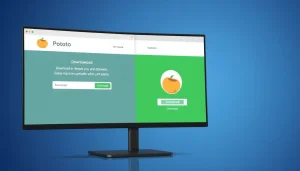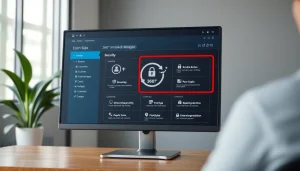Comprehensive Insights into Informatics: Elevate Your Knowledge at www.informaticsview.com
Introduction to Informatics
In today’s fast-paced digital world, the role of www.informaticsview.com in improving various fields is more crucial than ever, especially in healthcare. Informatics is a multi-disciplinary field that combines elements from computer science, information science, and healthcare to manage and analyze data effectively. The exponential growth in health-related data necessitates a deep understanding of how to utilize this information for better health outcomes. This article aims to provide a comprehensive understanding of informatics, its importance, applications, and future trends.
What is Informatics?
Informatics is often defined as the science of processing data for storage and retrieval. It encompasses the use of technology to gather, store, analyze, and disseminate information. More specifically within healthcare, informatics refers to health informatics, which integrates aspects of information technology with health sciences. It aims to enhance healthcare delivery by utilizing data insights for decision-making and to improve patient care.
Importance of Informatics in Healthcare
Informatics plays a vital role in the healthcare sector by improving service delivery and patient care outcomes. The application of informatics enables healthcare professionals to track patient histories, understand treatment outcomes, and research public health trends. Key areas where informatics is significant include:
- Improved Patient Safety: Digital health records allow clinicians to access complete patient data, reducing errors in treatment due to misinformation.
- Enhanced Research: Access to extensive data facilitates research and the development of new treatments and drugs.
- Efficient Resources Management: Informatics helps in the optimal allocation of resources, thereby preventing wastage and improving healthcare service efficiency.
Historical Evolution of Informatics
The roots of informatics can be traced back to the early days of computing in the 1960s when healthcare began to utilize electronic medical records (EMRs). Over the years, the field has transformed with the advent of new technologies. By the 1980s, the integration of personal computers into healthcare settings allowed clinicians quicker access to patient data. The introduction of the internet and digital communication revolutionized the exchange of information, making telehealth services and online patient portals common practices today.
Core Principles of Informatics
Data Management Techniques
At the heart of informatics lies data management, which involves the collection, storage, and analysis of valuable health information. Effective data management techniques include:
- Structured Data Storage: Utilizing databases that categorize information into defined formats for easy retrieval.
- Data Quality Assurance: Ensuring accuracy, consistency, and security of data through protocols that govern data entry and access.
- Data Mining: Employing algorithms and machine learning to analyze large datasets for hidden patterns that can improve healthcare delivery.
Information Technology in Healthcare
Information technology (IT) forms the backbone of informatics in healthcare. Systems such as Electronic Health Records (EHRs), Clinical Decision Support Systems (CDSS), and Patient Management Systems streamline processes and facilitate better healthcare outcomes. Key IT components include:
- Cloud Computing: Provides scalable storage options and remote access to healthcare data, enhancing collaboration among health professionals.
- Data Analytics: Tools that help healthcare organizations analyze trends and improve decision-making processes.
- Mobile Health (mHealth): The use of mobile devices and applications for health monitoring and communication between patients and providers.
Ethical Considerations in Informatics
As informatics continues to evolve, ethical considerations have gained prominence. Key issues include:
- Patient Privacy: Protecting sensitive patient information from unauthorized access and breaches.
- Data Ownership: Clarifying who owns the data generated from healthcare activities and how it can be used.
- Bias in Data: Recognizing and mitigating biases in health data that can lead to disparities in treatment and outcomes across different demographics.
Applications of Informatics
Informatics in Clinical Settings
In clinical settings, informatics significantly contributes to patient care through tools like EHRs and CDSS. EHRs consolidate patient history, medication details, and lab results in a unified database, allowing for comprehensive patient assessments. CDSS provides healthcare professionals with evidence-based recommendations, enhancing decision-making processes. The impact of informatics in clinical environments is evident in:
- Streamlined workflows that reduce administrative burdens on healthcare providers.
- Improved chronic disease management through tailored treatment plans based on real-time data.
- Better coordination of care among multidisciplinary teams, ensuring that all professionals contribute effectively to patient health.
Telemedicine and Remote Monitoring
Telemedicine has leveraged informatics to provide remote healthcare services, especially crucial during the COVID-19 pandemic. It allows patients to consult with healthcare providers without physical visits, thus ensuring safety and convenience. Key features of telemedicine include:
- Video consultations that replicate in-person interactions, allowing for effective communication and patient assessment.
- Remote monitoring tools that track vital signs and symptoms through wearable technology, enabling timely interventions.
- Telehealth platforms that integrate with EHRs for seamless information transfer and updates during patient interactions.
Informatics for Public Health
Informatics has proved invaluable for public health initiatives, especially in surveillance and outbreak management. It facilitates:
- Real-time data collection and analysis during health crises, enabling swift responses to emerging threats.
- Population health management through analytics that identify trends and risk factors among specific demographics.
- Health education and promotion programs that rely on data insights to guide interventions for community improvement.
Challenges in Implementing Informatics
Data Privacy and Security Issues
One of the most pressing challenges in healthcare informatics is ensuring data privacy and security. As healthcare organizations adopt digital solutions, they become targets for cyber-attacks. Strategies to mitigate these risks include:
- Implementing robust encryption methods for data storage and transmission.
- Regularly updating software and systems to protect against vulnerabilities.
- Conducting training sessions for staff on best practices for data protection.
Integration Across Systems
Healthcare systems often utilize disparate technologies that do not easily communicate. Achieving interoperability is essential for a seamless workflow. Challenges include:
- Diverse systems with unique protocols that complicate data sharing.
- Lack of standardized data formats that hinder effective integration.
- Resistance from stakeholders due to concerns over costs and complexity of integration processes.
Solutions involve the adoption of health information exchange frameworks that promote collaboration and communication across different platforms.
Training and Adoption Among Healthcare Professionals
For informatics systems to be effective, healthcare professionals must be adequately trained. Challenges faced during the training and adoption stages include:
- Resistance to change due to the comfort with established processes.
- Varied levels of technological proficiency among staff, necessitating customized training programs.
- Time constraints that limit opportunities for training and practice with new systems.
Structured training programs that include hands-on experiences can enhance users’ comfort levels and increase the likelihood of successful adoption.
Future Trends in Informatics
Artificial Intelligence and Machine Learning in Healthcare
Artificial Intelligence (AI) and Machine Learning (ML) are poised to revolutionize healthcare informatics further. These technologies enhance decision-making processes by providing predictive analytics that can forecast patient outcomes based on historical data. Applications include:
- Patient risk stratification that identifies individuals at high risk of adverse health outcomes.
- Automated diagnostic tools that assist in identifying diseases based on clinical data and imaging.
- Personalized medicine approaches that tailor treatments based on genetic and clinical factors, improving individual patient outcomes.
Interoperability and Data Sharing
The future of healthcare informatics will increasingly focus on achieving interoperability among systems. Enhanced data sharing capabilities are vital for:
- Creating comprehensive patient profiles through the aggregation of data from different sources.
- Facilitating collaboration among healthcare providers, resulting in improved care coordination.
- Streamlining administrative processes and reducing errors through better communication and information transfer.
The Role of Patient Engagement in Informatics
Patient engagement is emerging as a central theme in healthcare informatics. Increased access to personal health information encourages proactive patient participation in their own care, leading to:
- Better adherence to treatment plans reported by patients.
- Enhanced patient satisfaction as individuals feel more involved in their health-related decisions.
- Expanded use of patient grievances and feedback as valuable data to improve healthcare practices.
As healthcare organizations increasingly adopt informatics, empowering patients through access to their health data will become a key priority.














Post Comment